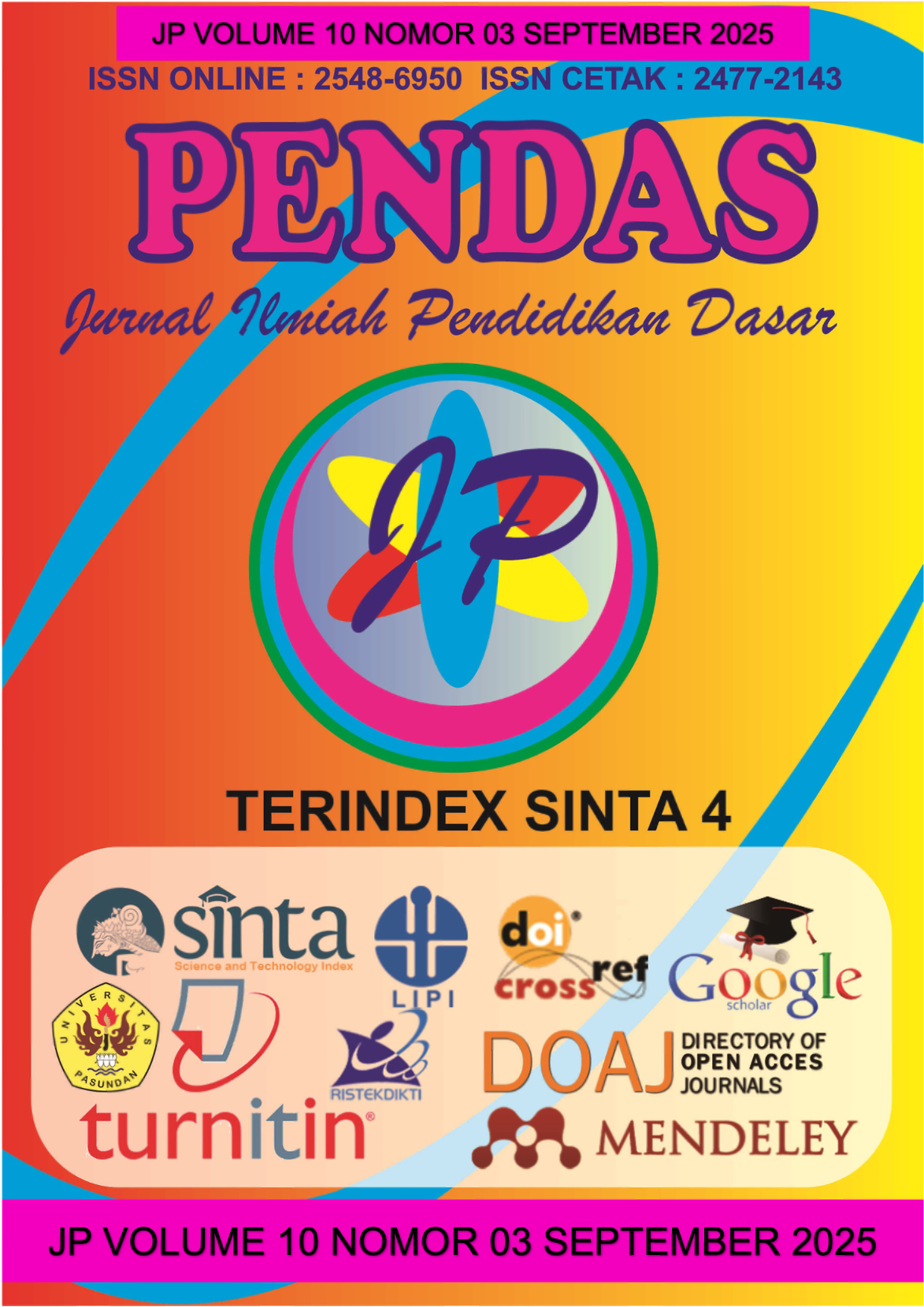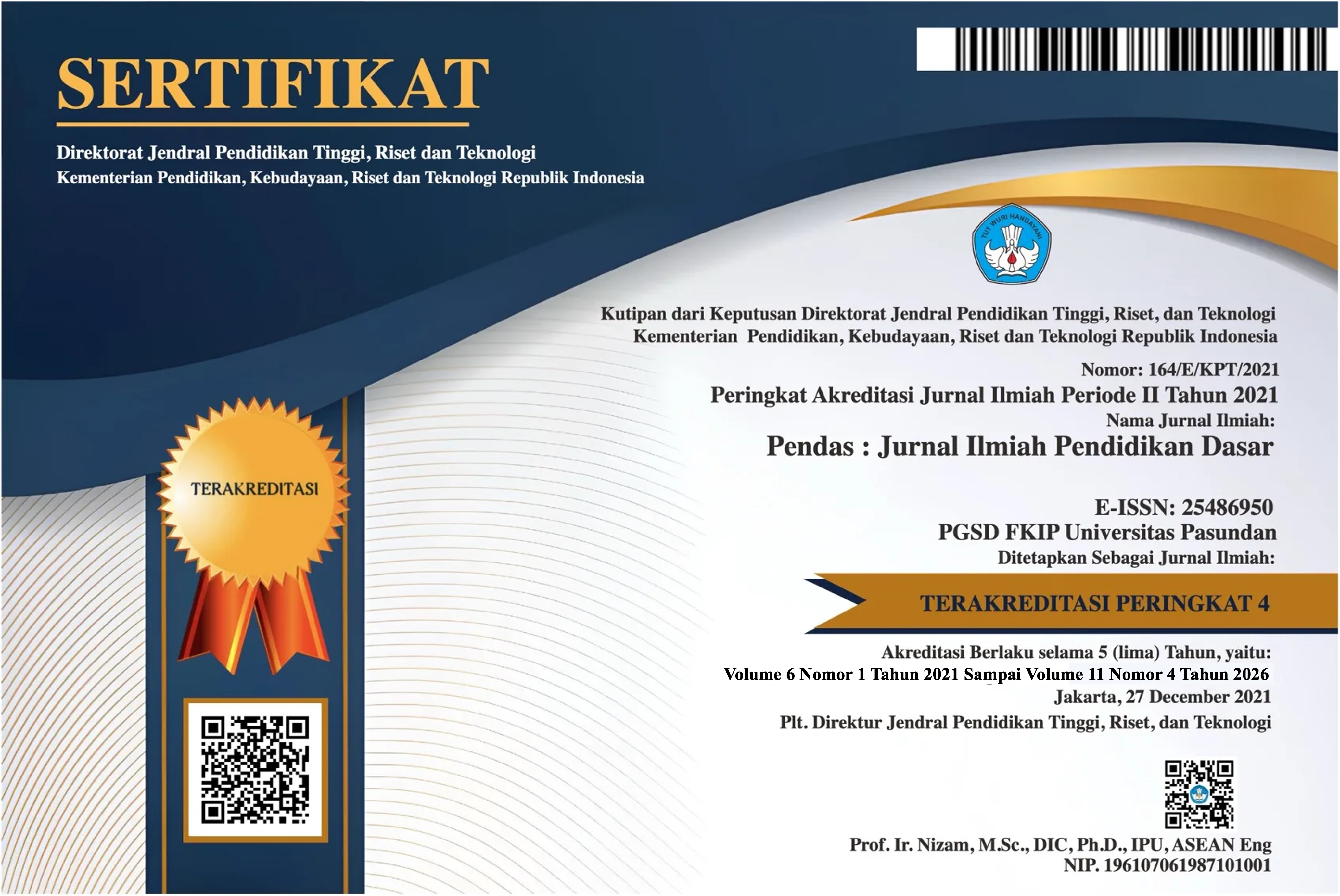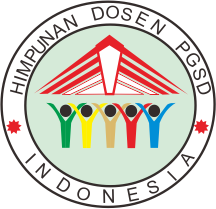EFEKTIVITAS BUKU AJAR INTERAKTIF PAI DALAM MENINGKATKAN HASIL BELAJAR KOGNITIF, MOTIVASI BELAJAR, DAN INTERNALISASI NILAI-NILAI KEAGAMAAN PESERTA DIDIK
DOI:
https://doi.org/10.23969/jp.v10i03.31627Keywords:
Interactive Textbook, Cognitive, Learning Motivation, Internalization, Learning OutcomesAbstract
This study aims to analyze the effectiveness of interactive Islamic Religious Education (PAI)
textbooks in improving cognitive learning outcomes, learning motivation, and internalization
of religious values of students in Elementary Schools in Bandar Lampung City. Using the
Research and Development (R&D) approach with the ADDIE (Analysis, Design,
Development, Implementation, Evaluation) development model, this study focuses on the
development of innovative and research-relevant teaching materials. This study will focus
on the development of interactive PAI textbooks for grade IV elementary school students.
The results of the study indicate that the use of interactive textbooks significantly improves
students' cognitive learning outcomes through the presentation of more interesting, visual,
and easy-to-understand materials. In addition, interactive elements in the teaching materials
have proven to be very effective in generating and maintaining students' learning motivation,
creating a learning environment that is not monotonous and more participatory.
Furthermore, this textbook facilitates the internalization of religious values by instilling
Islamic teachings and values in depth, contextually, and applicatively. Thus, the
development and implementation of interactive PAI textbooks using the R&D approach and
the ADDIE model is an effective strategy to optimize the learning process and achieve
comprehensive PAI education goals.
Downloads
References
sela, S., UH Salsabila, NHP Lestari,
and ... 2020. “Peran Media
Interaktif Dalam Pembelajaran
PAI Bagi Gaya Belajar Siswa
Visual.” Jurnal Inovasi …
(Query date: 2024-05-22
00:15:16).
Bouncken, R. B., V. Fredrich, N.
Sinkovics, and R. R. Sinkovics.
2023. “Digitalization of Cross-
Border R&D Alliances:
Configurational Insights and
Cognitive Digitalization
Biases.” Global Strategy
Journal 13(2):281–314.
doi:10.1002/gsj.1469.
Damayanti, Damayanti, Heni
Sulistiani, Berlintina
Permatasari, Eroni
Febrimadhona Guji Suai Umpu,
and Tri Widodo. 2020.
“Penerapan Teknologi
Tabungan Untuk Siswa Di Sd
Ar Raudah Bandar Lampung.”
Pp. 25–30 in Vol. 1.
Giantara, F., M. Amril, and A. Bakar.
2022. “Tantangan
Transformatif PAI Di Era
Kontemporer Perspektif
Kecerdasan Spiritual-Sosial.”
Al-Mutharahah: Jurnal
367
Penelitian … (Query date:
2024-05-24 13:05:04).
Habie, L. 2024. “Korelasi Antara
Kompetensi Pedagogik Guru
Dan Penggunaan Media
Pembelajaran Dengan Hasil
Belajar PAI.” TADABBUR
(Query date: 2024-05-22
00:15:16).
Hidayat, Fitria, and Nizar Muhamad.
2021. “Model Addie (Analysis,
Design, Development,
Implementation and
Evaluation) Dalam
Pembelajaran Pendidikan
Agama Islam Addie (Analysis,
Design, Development,
Implementation and
Evaluation) Model in Islamic
Education Learning.” J. Inov.
Pendidik. Agama Islam
1(1):28–37.
Ningrum, Dwi Utami, Hety Diana
Septika, and Muhlis Muhlis.
2024. “Wacikal Sebagai Bahan
Ajar Interaktif Seni Budaya Di
Sekolah Dasar.” Jurnal
Basataka (JBT) 7(1):52–62.
Purwati, PD, A. Azzahra, SK Bestari,
NL Ramadhani, and ... 2024.
Desain Pembelajaran Inovatif
Downloads
Published
Issue
Section
License
Copyright (c) 2025 Pendas : Jurnal Ilmiah Pendidikan Dasar

This work is licensed under a Creative Commons Attribution 4.0 International License.



















